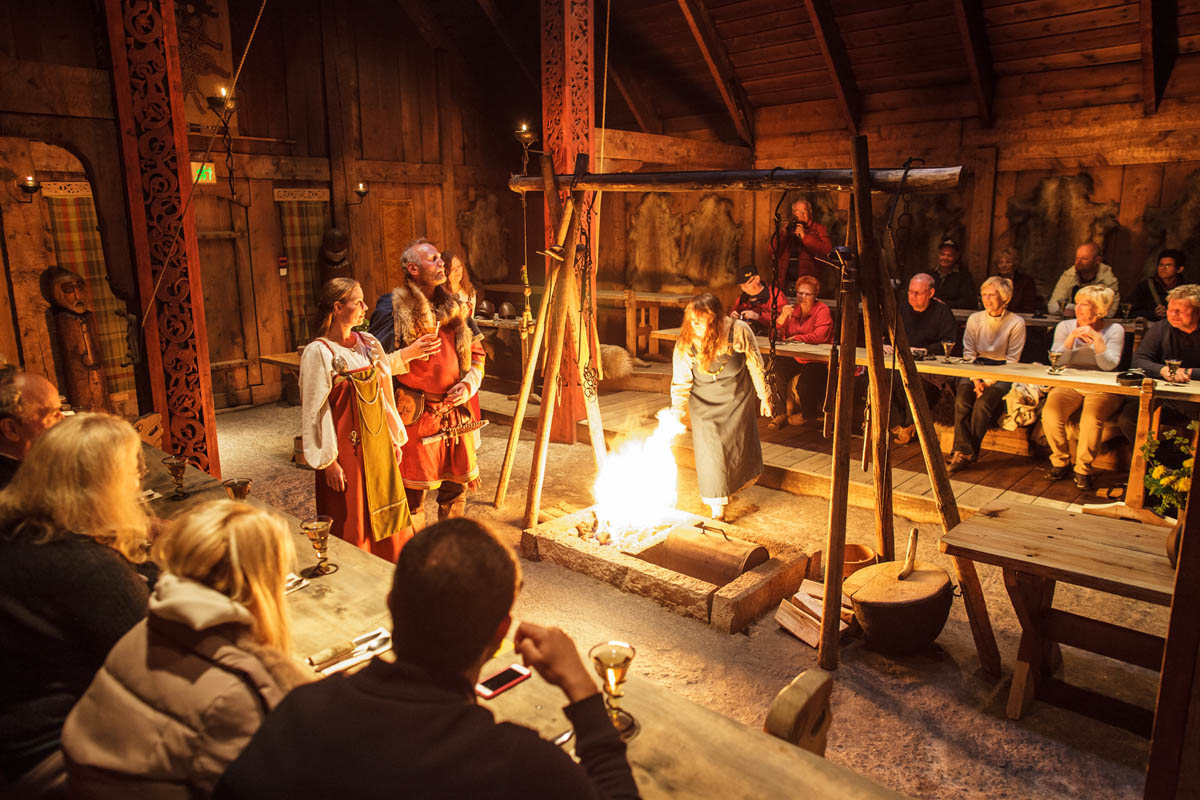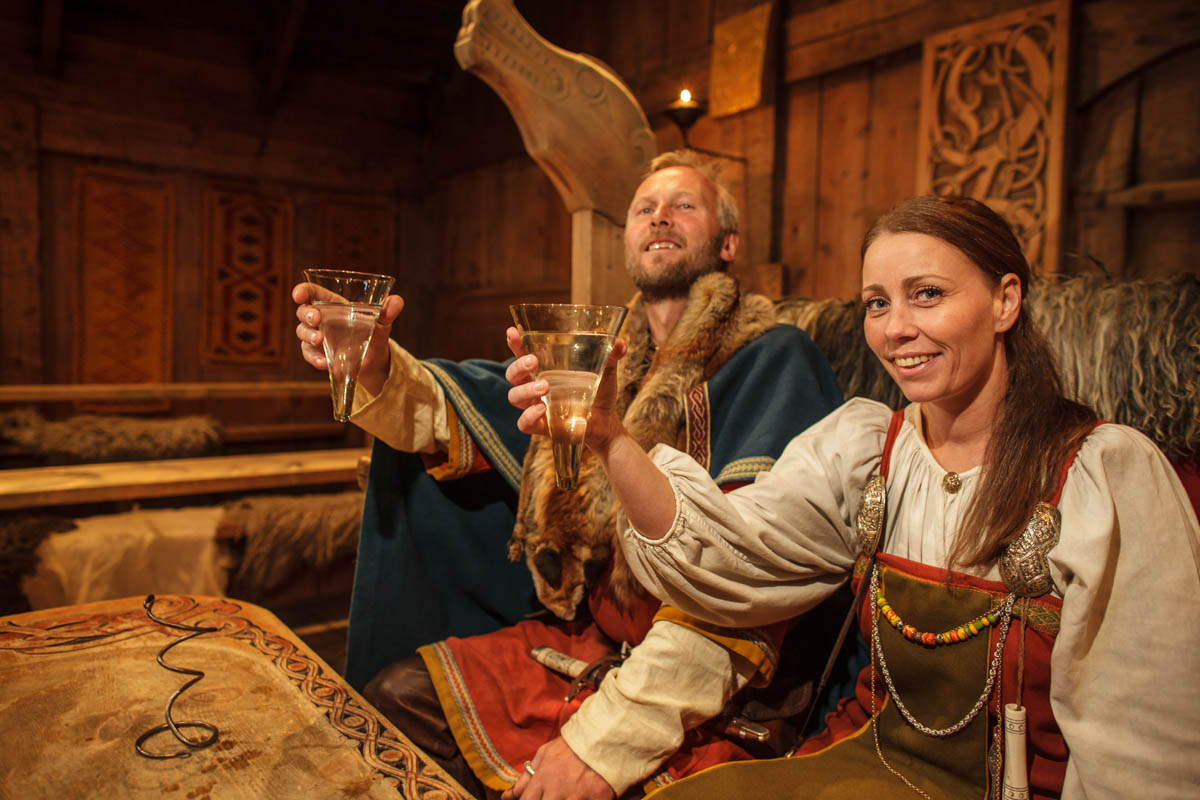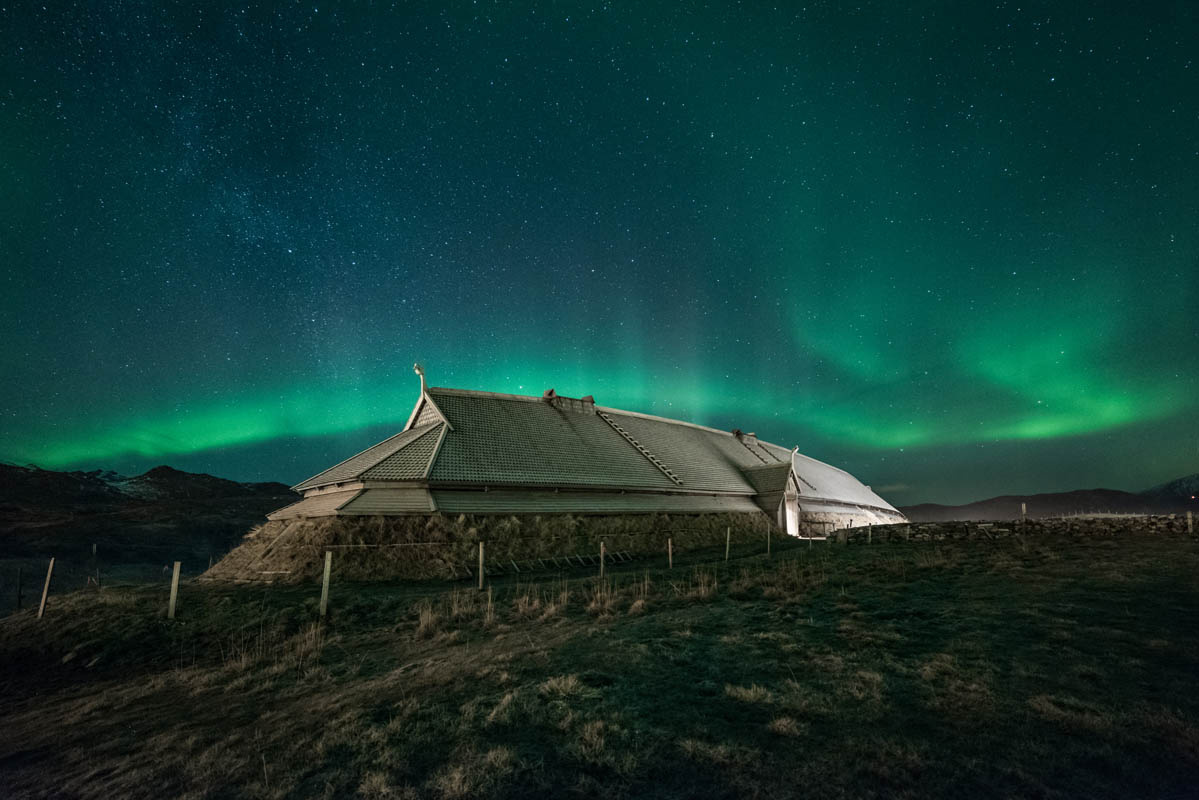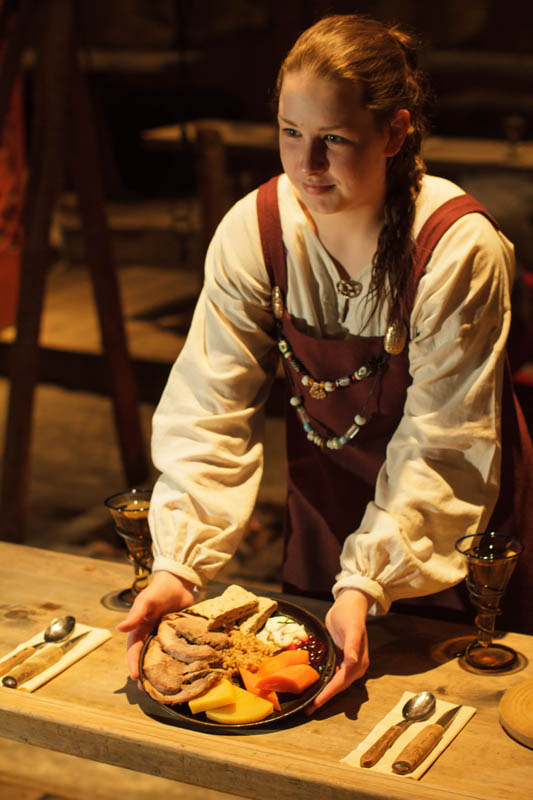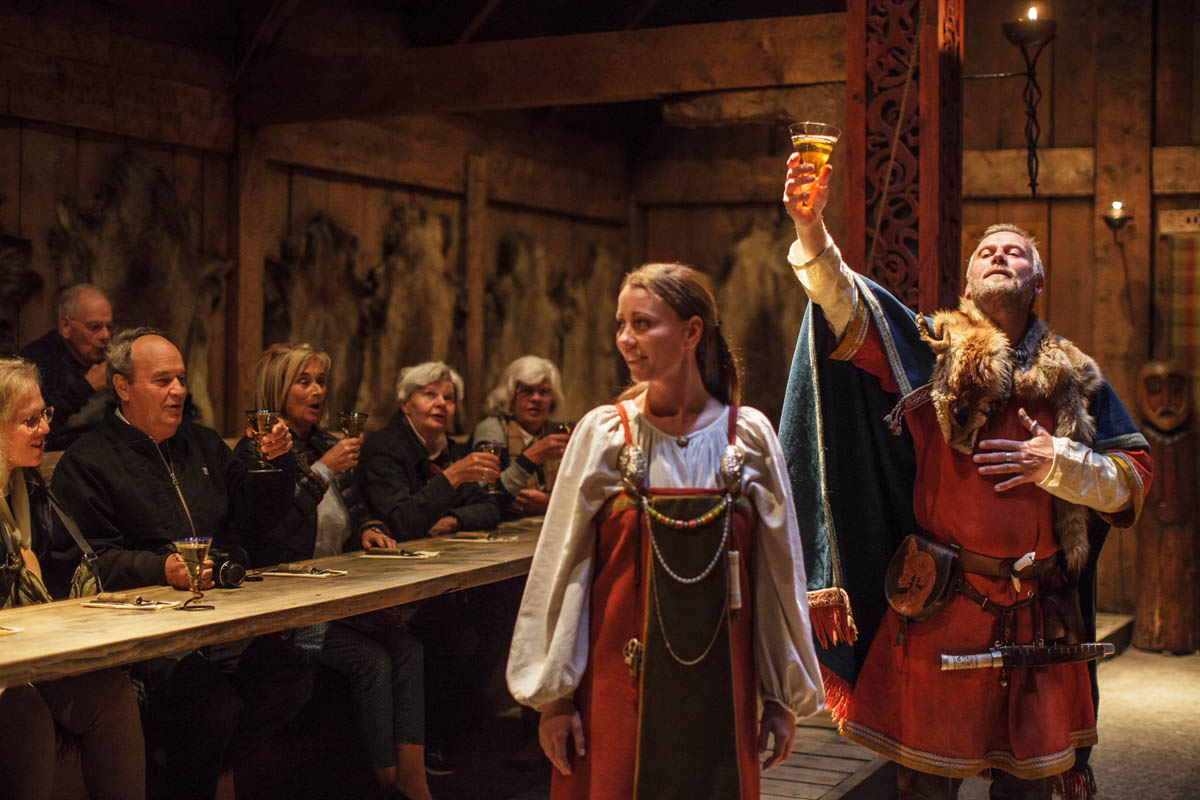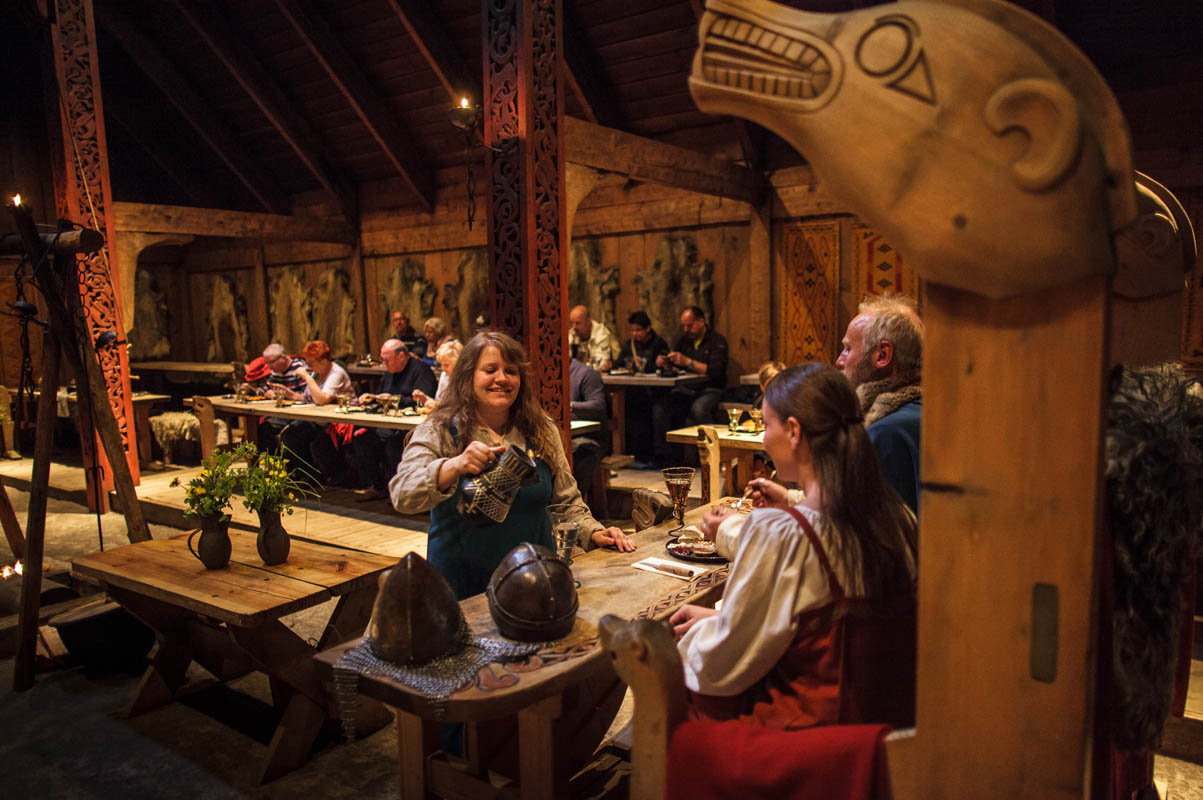The chieftain house at Borg is the largest Viking era house ever discovered. And it is once again populated by Vikings. Come to see, hear, feel and smell the Viking Age.
In the heart of Lofoten, this Viking house proudly stands atop a hill overlooking the archipelago’s most fertile agricultural plain. Its visitors are not only tourists—archaeologists and historians also flock here to learn more about the Vikings.
The Viking Age is at you fingertips
At Borg in Lofoten, you can experience Viking life in a vibrant environment. Smell the tar and bonfires. Taste their food and listen to their stories. The Vikings have been waiting for you for more than a thousand years.
A wooden house, 83 metres long, covered in thick peat walls—when the scope of this archaeological discovery became clear in the 1980s, it quickly became a sensation among archaeologists and historians. No where else in the Viking world had such a large building ever been discovered.
The building was first erected before the Viking Age, in the 500s. At the time, it was 67 metres long. In the 700s, it was extended to a length of 87 metres, and it remained in this condition until the 900s. The glory days of this house therefore corresponds to the first half of the Viking Age.
The elite Vikings lived here
The five so-called gullgubber that were found in postholes indicate the people who lived here belonged to the elite. Gullgubber are small, thin sheets of gold, stamped with mythological figures, and as they were discovered inside postholes, they are believed to have had some sort of religious significance. Glassware, of which just shards remain, produced down on the Continent and transported all the way up to Lofoten was likely quite a status symbol.
French ceramics, also broken into a thousand pieces, was likely the utmost luxury, something only the very richest people could afford. The quantity of artefacts recovered is comparable to large Viking communities further south, such as Kaupang in Vestfold, which surprised archaeologists.
This was likely the location of the Chieftain’s seat
All indications point to the residents of this building being big deals in their community, most likely with aristocratic connections in Southern Scandinavia. They would have traded in skins from bears, foxes, seals and reindeer, horns and antlers, eider down and other northern goods in high demand. Perhaps dried fish was already a commodity? Goods were sold all over the country, as well as abroad.
Perhaps they found time to do a raid or two while on their trading journeys? On their return journey they brought luxury goods and grain, which was in short supply in the north.
The house was rebuilt in traditional style
The outline of the old house, with outer walls and postholes, is still visible in the terrain. The new Viking house was erected parallel to the old house. The discovery here and knowledge from other Viking settlements helped determine the right pitch of the roof and the 9-metre high vaulted ceiling.
With the roof and walls in place, the house could be filled with pots and pans, textiles, beds, benches and chairs, tools and weapons and everything else a Viking household needs. Archaeologists and historians come here to immerse themselves in the past, which increases their insights into the Viking Age. For the general public, there is no other place where the Viking Age seems more alive.
At Borg you can be transported back in time
Smell the tar and the bonfires and watch the blacksmith work. Observe “women’s work”, such as weaving and needlebinding, and inspect the boats, which were essential for fishing and hunting; talk to the Vikings about how to make sure you get the kill shot. Try on the helmet. Feel the weight of the sword in your hand.
Want to visit Borg?
The museum has large archaeological exhibits. The house is located close to the E10, at Borg on Vestvågøya in Lofoten. It’s clearly visible from the road. Borg is open year-round, with slightly reduced hours in the winter season. Check the website for updated hours! At night, visitors get to take part in a Viking feast.
